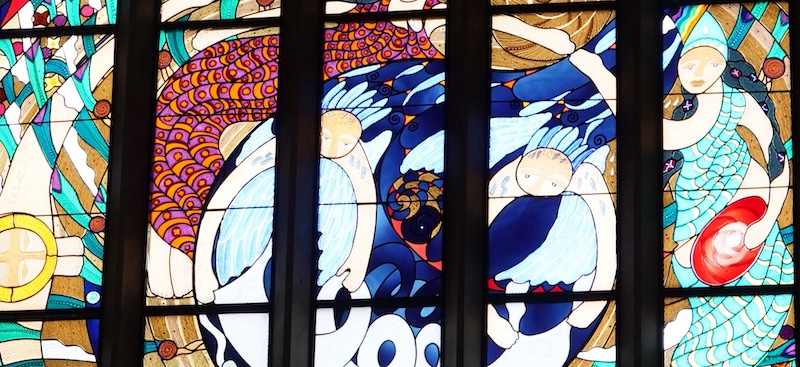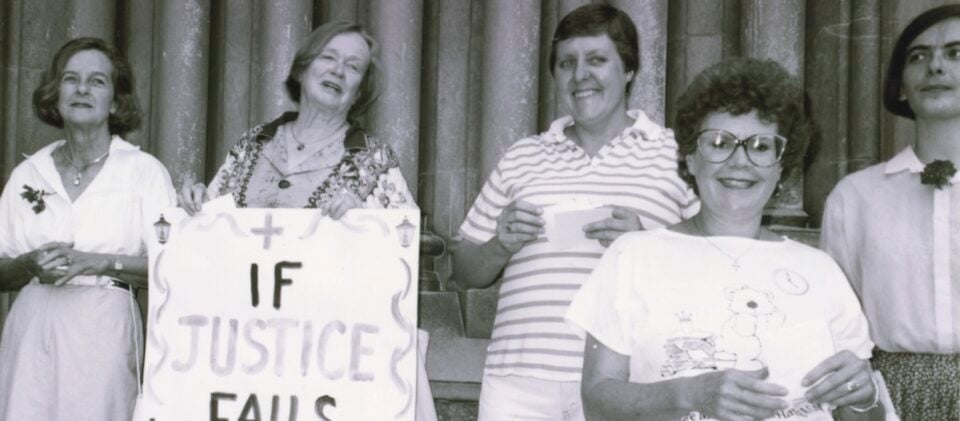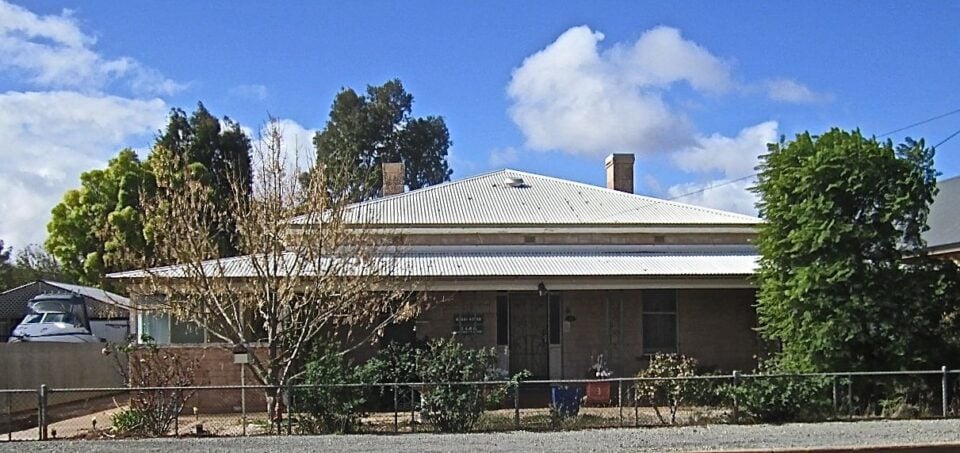In her sermon at the service to celebrate the 30th Anniversary of the ordination of women priest in the Australian Anglican Church, Archbishop Kay Goldsworthy AO discussed the inspiration she draws, and hopes young women considering their calling will draw, from the Magdalene Window in St Peter’s Cathedral, Adelaide.
The Magdalene Window acknowledges and celebrates the role of women in the Scriptures, in the history of the Church and in the forefront of social change in South Australia. It was designed by David Wright, a glass artist from Melbourne, who used the inspiration of Mary Magdalene and the women at the empty tomb for this spectacular window.
It was installed in October 2001.
Two major aspects to the theme of the window are:
- To celebrate one of the most momentous changes to have occurred over the past hundred years – the recovery of the voices of women who have contributed to our past and recent history. Whilst acknowledging and drawing on stories from the past, a window of relevance for the present and the future has been created.
- To celebrate the qualities associated with the feminine which increasingly enrich our experience as men and women of God, and of ways of relating to each other.
The Circle and the Spiral
The circle and the spiral are important elements in the design.
There are two main circular movements:
One is the circle of the earth which embraces the figures around the tomb.
The other is the sweeping circle which takes us from the entrance to the tomb, through the heavens and leads us back to Christ, half hidden in the garden.
The strong circular movement is symbolic of the supportive nature of women’s ministry.
The figures are bound together, integrated with the landscape in a dance of life, hands outstretched to each other. The circles cut across the long vertical mullions of the lancet panes, resisting the urge for an hierarchical relationship that the architectural structure seeks to impose on the design. Instead, the relationship is one of interwoven support.
The spiral also occurs throughout the design and symbolises the potential for action, like a clock spring, from the coil within the seed to the spiral stars and plants swirling in space.
God is shown at the centre of the design as a single point. All potential spirals out from God, all possible ways of being.
The Women
Mary Magdalene and the women come to anoint Christ’s body at the tomb.
One carries a jar filled with aromatic herbs, symbolic of the ‘hands on’ nature of much of women’s ministry: the administering to the body, the dealing with the not always pleasant aspects of life and death, the soothing and cleaning and making good. In short, the ministry of nurture.
The women arrive to find the stone rolled back (the word relating to the motion of giving birth). The tomb is empty except for two angels: one at the head of the shroud, one at its foot.
It is a potent moment. Just as women know that pain is a prelude to birth, so the pain of the crucifixion precedes the resurrection and the tomb is also symbolic of the womb.

The shroud unwraps its spiral coil, suggesting the power of what has taken place.
A needle hangs from the shroud, symbolic of the work that women have historically done in the Church holding it together in the detail, the never- ending work that is so often overlooked: the cleaning, flowers, mending, embroidery – the patient recurring, loving ministry of the ephemeral.
In their moment of crisis the women stretch out their hands to each other, forming a circular supportive link.
Arms outstretched, Christ completes the circle. His resurrection is for us. We are freed to be whatever God ordained, fulfilling our potential as truly human.
Appropriate for the theme of women’s ministry, it is overlaid with the later scene where the risen Christ appears to Mary Magdalene and she mistakes him for the gardener. He tells her to go and tell the disciples the good news that He is risen—she is the Apostle to the Apostles.
Above Mary’s head, lines of the sweep of the earth meet with the arc formed by the resurrection form a mitre. At her feet lies the shepherd’s crook, spiraling tendril-like and flowering at its tip.
These are symbols of women’s ministry of leadership in the Church, of women’s voices. In the mitre is the pearl, symbol of Sophia, of wisdom.
Mary Magdalene holds, womb-like, an egg that is turning red. A tradition has it that when the Emperor Tiberius challenged her story of the risen Christ, saying it was no more possible than an egg turning red, Mary picked up the egg which promptly turned red in her hand.
The Garden
The circular garden which surrounds the tomb (itself symbolic of the womb with its promise of rebirth) sprouts from seed, to leaf, to flower in response to the resurrection. The leaves and flowers follow the cycle of the seasons and spread out to the rim of the earth, which is encircled by the flames of the Holy Spirit.
At the edge of the skies, leaves and flowers are consumed and returned to the earth to replenish the next generation.
Water, like the waters of the uterus at birth, flows through the landscape, feeding and nur- turing life, and carries us from the empty tomb up through the heavens.
Bound by the rainbow of God’s covenant, and with the protection of angels’ feathers, we are carried back to Christ in the garden.
There are two gentle allusions to Aboriginal spirituality in the design.
- One is the movement of the water through the landscape.
- The other is the rainbow which winds up from the earth through the heavens and back to earth with a deliberately serpentine quality.
The Universe
The spinning garden is also the earth spinning in space. We are all one people under God, bound together on this beautiful planet.
While human history may be measured in millennia, we measure our own lives in the few generations that come each side of us (symbolized by the embryonic life suspended amongst the stars) and the worth of our lives by the relationships that sustain us.
Against this we glimpse the grand beauty of the universe, hinted at in this design by the broad sweep of the stars and planets which rush by us.
As we advance through the next millennium, our survival will depend on how we treat each other and how lightly we tread on our fragile planet.
Women’s ministry has much to teach us about support and nurture for each other, about the care of the fragile, and the importance of the ephemeral, and about the exercise of leadership that is inclusive with a wise gentleness about it.
The Artist
David Wright was born in Melbourne in 1948. Since graduating in Architecture in the early 1970s he has gained an international reputation for his unique style and glass working techniques, whereby the glass is layered and moulded in the kiln, giving a rich colour and texture to his work.
Past commissions have included work for the New Parliament House in Canberra, and one of Australia’s largest ecclesiastical commis- sions, the Creation Wall in the heritage Church of St James, King Street, Sydney. This huge bicentennial project occupies some 90 square metres. Other major projects have involved designing 22 innovative windows for the Temple Beth Israel Synagogue in Melbourne, and a series of windows for a combined Hindu /Christian Worship Centre in Fiji.






